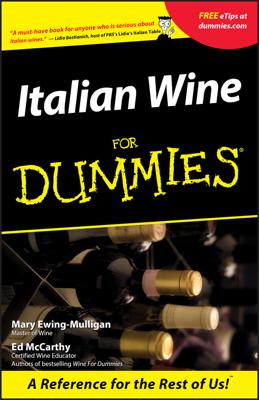Your first step in your encounter with the wine list is to size up the list. You can do so by noting how the wine list is organized. As soon as your server comes to the table, ask to see the wine list. Besides communicating to the server that you feel comfortable with wine (whether it’s true or not), quickly asking for the list gives you more time to study it. Also, if you wait until the food is served to order a wine, you might get the wine when you’re almost finished eating!
What the wine list should tell you
You can’t predict exactly what you’ll find on the wine list, other than prices. Generally speaking, though, you might discover the wines arranged in the following categories:
Champagne and sparkling wines
(Dry) White wines
(Dry) Red wines
Dessert wines
Some restaurants further subdivide the wines on their list according to country, especially in the white and red wine categories: French red wines, Italian red wines, California reds, and so on. These country sections may then be subdivided by wine region. France, for example, may have listings of Bordeaux, Burgundy, and possibly Rhône all under French Red Wines. U.S. Reds may be divided into California wines, Oregon wines, and Washington wines. Some lists organize wines by grape varieties rather than by origin.
The more serious a restaurant is about its wine selection, the more information it gives you about each wine. Here’s some information you’re likely to find about each wine:
Item number: These numbers are sometimes called bin numbers, referring to the specific location of each wine in the restaurant’s cellar or wine storage room.
The name of each wine: The names of wines may be grape names or place-names, but they had better also include the name of each producer, or you’ll have no way of knowing exactly which wine any listing is meant to represent.
A vintage indication — the year the grapes were harvested: If the wine is a blend of wines from different years, it may say NV, for non-vintage.
Description of each wine: Sometimes, you might find a brief description of the wines; however, this is unlikely if dozens of wines are on the list.
Food pairings: Sometimes, a wine list might include suggestions from the restaurateur for certain wines to pair with certain dinner entrées. This information can be helpful, but you might not always like — or agree with — the wine suggestion.
Prices for each wine: Wine lists always include prices.
Tips for using the wine list
Depending on the nature of that list, here are some helpful tips:
Notice low to high pricing. Often, you’ll find that within each category, the wines appear in ascending order of price with the least expensive wine first. Many a restaurateur figures you’ll go for the second, third, or fourth wine down the price column or even deeper if you’re feeling insecure and need the reassurance that your choice is a good one. (Meanwhile, that least expensive wine may be perfectly fine. Don’t hesitate to order it.)
Check out the regional wines. If a restaurant features a particular country’s cuisine, the wines of that country, say Italian, may be listed first, followed by a cursory listing of wines from other areas. You’ll usually find the best values in those regional wines.
Notice the appearance. Once upon a time, the best wine lists consisted of hand-lettered pages inside heavy leather covers embossed with the words Carte des Vins in gold. Today, the best wine lists are more likely to be laser-printed pages or cards.
Don’t worry if no separate list exists. Sometimes, the list of wines is actually part of the restaurant’s menu, especially if the menu is a computer-printed page or two that changes from week to week. Restaurants featuring immediate, up-to-date wine listings like this can be a good bet for wine.
Pay attention to the numbers. Item numbers for each wine make it easier for the server to locate and pull the wine quickly for you. They’re also a crutch to help the server bring you the right wine in case he doesn’t have a clue about.
Many restaurants that are serious about wine publish their wine lists on the Internet.
The end result: Choosing your wine
If, after sizing up the wine list, you decide that you aren’t familiar with most of the wines on it or are confused about which wine to drink, ask for help with your selection.
If the restaurant is fairly formal or very wine-focused, ask whether a sommelier (pronounced som-mel-yay) is on staff — technically, a specially trained, high-level wine specialist who’s responsible for putting the wine list together and for making sure that the wines offered on the list complement the cuisine of the restaurant. If the restaurant isn’t particularly fancy, ask to speak with the wine specialist. Often someone on staff, frequently the proprietor, knows the wine list well.
If someone on the restaurant staff knows the wine list well, this person is your best bet to help you select a wine. He’ll also be extremely appreciative of your interest in the list.
Following are a few ways you can request help when choosing a wine:
If you aren’t sure how to pronounce the wine’s name, point to it on the list, or use the wine’s item or bin number.
Point out two or three wines on the and say, “I’m considering these wines. Which one do you recommend?” Doing so is also a subtle way of communicating your price range.
Ask to see one or two bottles; your familiarity with the labels, seeing the name of an importer whose other wines you’ve enjoyed, or some other aspect of the label might help you make up your mind.
Mention the food you plan to order and ask for suggestions of wines that would complement the meal.

